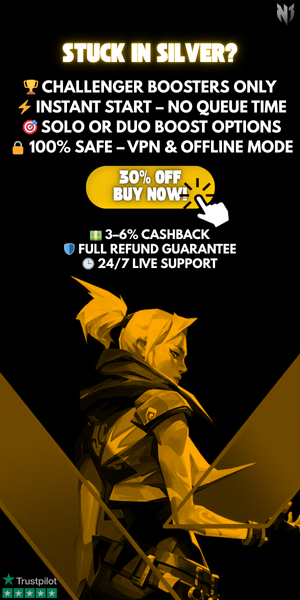Map-by-Map MMR Analysis: Which Maps Are You Losing?
Introduction
Climbing in Valorant isn’t just about individual skill—it’s also about how well you perform across different maps. Whether you're queuing solo or with a team, your MMR can fluctuate depending on your consistency on maps like Ascent, Bind, or Sunset. This guide explores how map-specific performance affects your hidden rating and helps you pinpoint which battlegrounds are hurting—or helping—your climb.
How Valorant's MMR System Tracks Map-Based Performance
While Riot Games hasn’t publicly confirmed a separate MMR for each map, data from players and tracking tools shows clear patterns. Players tend to gain more MMR on maps they’re familiar with and lose it quickly on those where they underperform—even if their combat stats are stable.
Performance variables tracked across maps may include:
- Win/loss ratio
- Entry success rate
- Agent pick consistency
- Round contribution metrics (plants, assists, trades, etc.)
Understanding how your results differ between maps allows you to identify training opportunities and focus on targeted improvement.
Top Signs You're Losing MMR on a Specific Map
- Frequent Losses Despite Solid Stats
- You may be top fragging, but if your team loses consistently on specific maps, you’ll still lose MMR.
- Low Assist & Utility Use
- On some maps, lack of utility synergy (e.g., not flashing A Main on Split) suggests poor adaptation to team tactics.
- One-Trick Agent Pitfalls
- Sticking to a comfort pick (like Jett or Reyna) may backfire on maps that require utility depth like Lotus or Icebox.
- Struggling With New Map Layouts
- Maps added recently (like Abyss or Sunset) often disrupt MMR trends until players adapt their strategies.
Improving Weak Map Performance for MMR Gains
- Analyze VODs and Stats Map-by-Map
- Use third-party tools or in-game replays to see where rounds fall apart most often (retakes, executes, etc.).
- Rotate Agent Pool Based on Map
- Pick meta-relevant agents for each map. For example:
- Ascent: Sova, Killjoy, Omen
- Bind: Raze, Viper, Skye
- Haven: Breach, Cypher, Jett
- Study Pro Play & Meta Shifts
- Watch pro matches for optimal map setups and execute ideas. Pro map mastery often translates well to ranked play.
- Scrim or Deathmatch With a Map Focus
- Practice rotations, spike plant positions, and duel spots in Custom Games or Deathmatch mode to improve comfort.
MMR-Friendly Maps for Most Players
Based on community data and performance trends:
- Ascent: Balanced map that favors good fundamentals. High MMR retention for structured players.
- Bind: Tends to punish disorganized teams; better for players with strong comms.
- Split: Mechanically demanding—can hurt MMR if your team lacks entry coordination.
- Haven: Rotations make it MMR-volatile. Great for shotcallers who control tempo.
- Sunset: A map where adaptability is key. MMR gains are possible with good mid control and lurk timing.
Final Thoughts
Your MMR journey isn’t just tied to how well you aim—it’s also about where you play and how you adapt your strategy. If you’re seeing inconsistent gains, map-specific weaknesses may be the hidden reason. Focused improvement on your worst-performing maps can stabilize your climb and lead to faster MMR gains across the board.
Want to know which maps are holding back your climb? Visit https://mmrvalorant.com/ to analyze map-by-map MMR trends, spot weaknesses, and start building consistency in every queue.
Tags

Author



